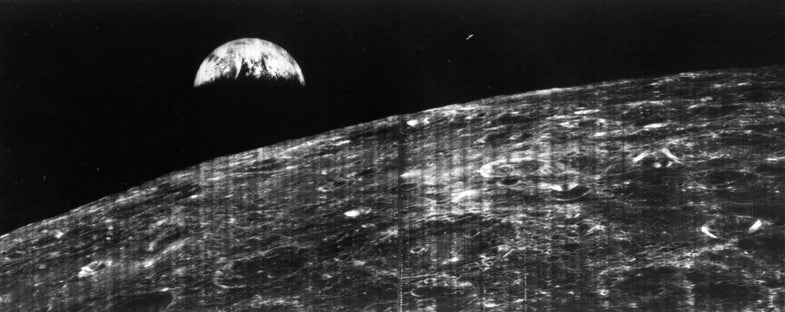How Was the First Photograph of the Earth Taken?
In the early days of the space race, this famous image was beamed back to Earth from the Lunar Orbiter — but what went in to making and transmitting it is literally out of this world

It was just over 45 years ago that it happened — August 23rd, 1966. The Lunar Orbiter transmitted back an image of the Earth as seen from the Moon — the first ever image with the entire planet in frame. Given the technology at the time and the early stage of the space program, how did they possibly manage to send a camera up in the probe, take a photograph, develope the film, scan it, and then beam it back to Earth? This video from 2007 talks about the incredible process:
The primary purpose of the probes was to record the surface of the Moon, to pave the way for future astronaut missions, as a result, photography was key to their mission. The camera and processing equipment took up a full third of probe’s body, the rest was devoted to navigation and propulsion. The cameras themselves had two lenses, firing simultaneously: one for wide-angle, one for detailed shots.
70mm film was fed through the cameras, exposed, and then automatically processed like a Polaroid. The images were then scanned via electron beam, and broadcasted back to Earth. The whole rig had to be designed to function through free fall, extreme temperature variations, cosmic radiation, gravity shifts and more.
However, at one point, NASA decided to swing the orbiter back around, and point it back at the planet from where it came — giving us one of the most iconic images of the space race.
While the original image is fairly low quality, the data used to make it was not, and the Lunar Orbiter Image Recovery Project is currently working on rebuilding those images at their proper quality.
[Inside Science via BoingBoing]